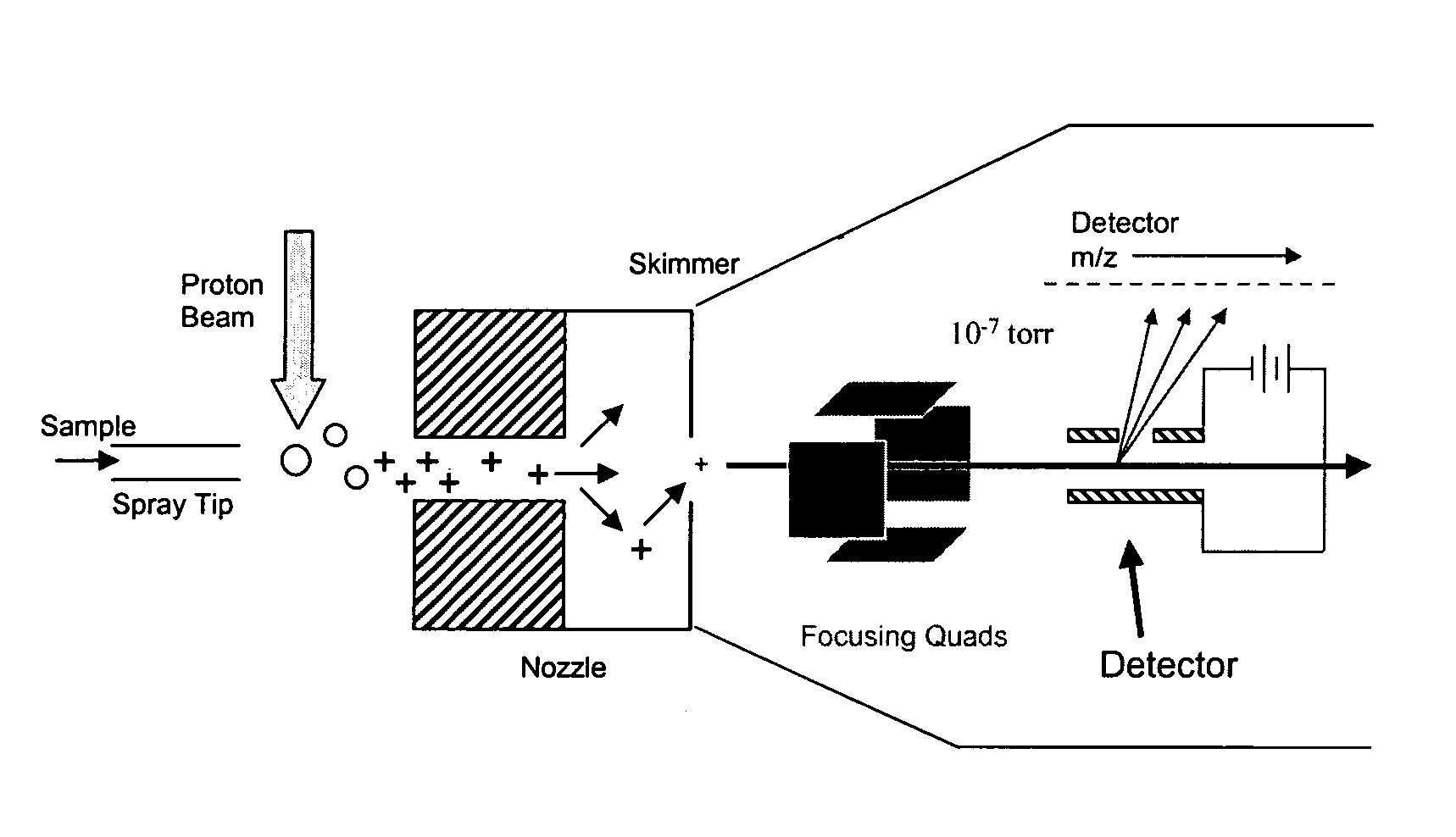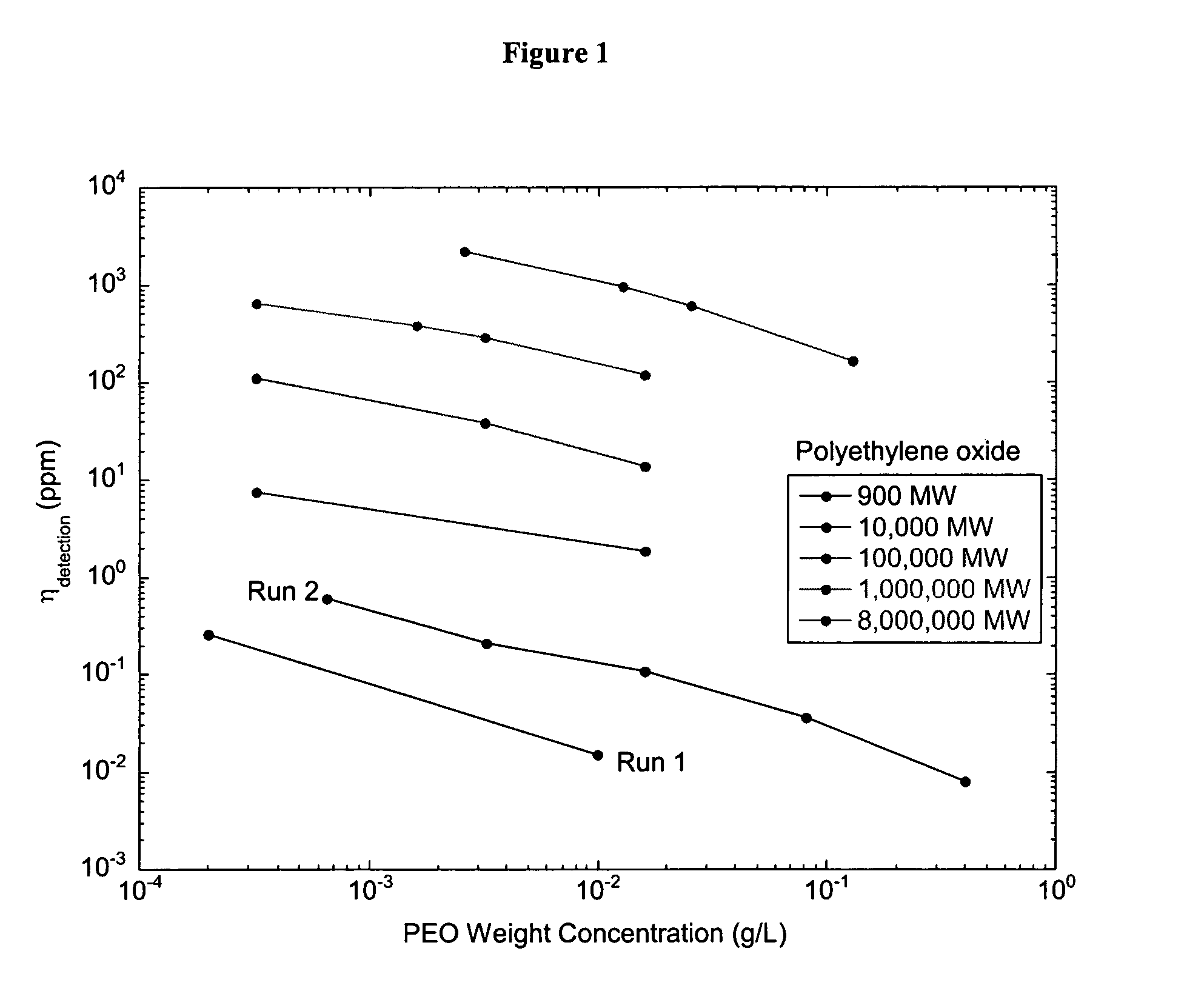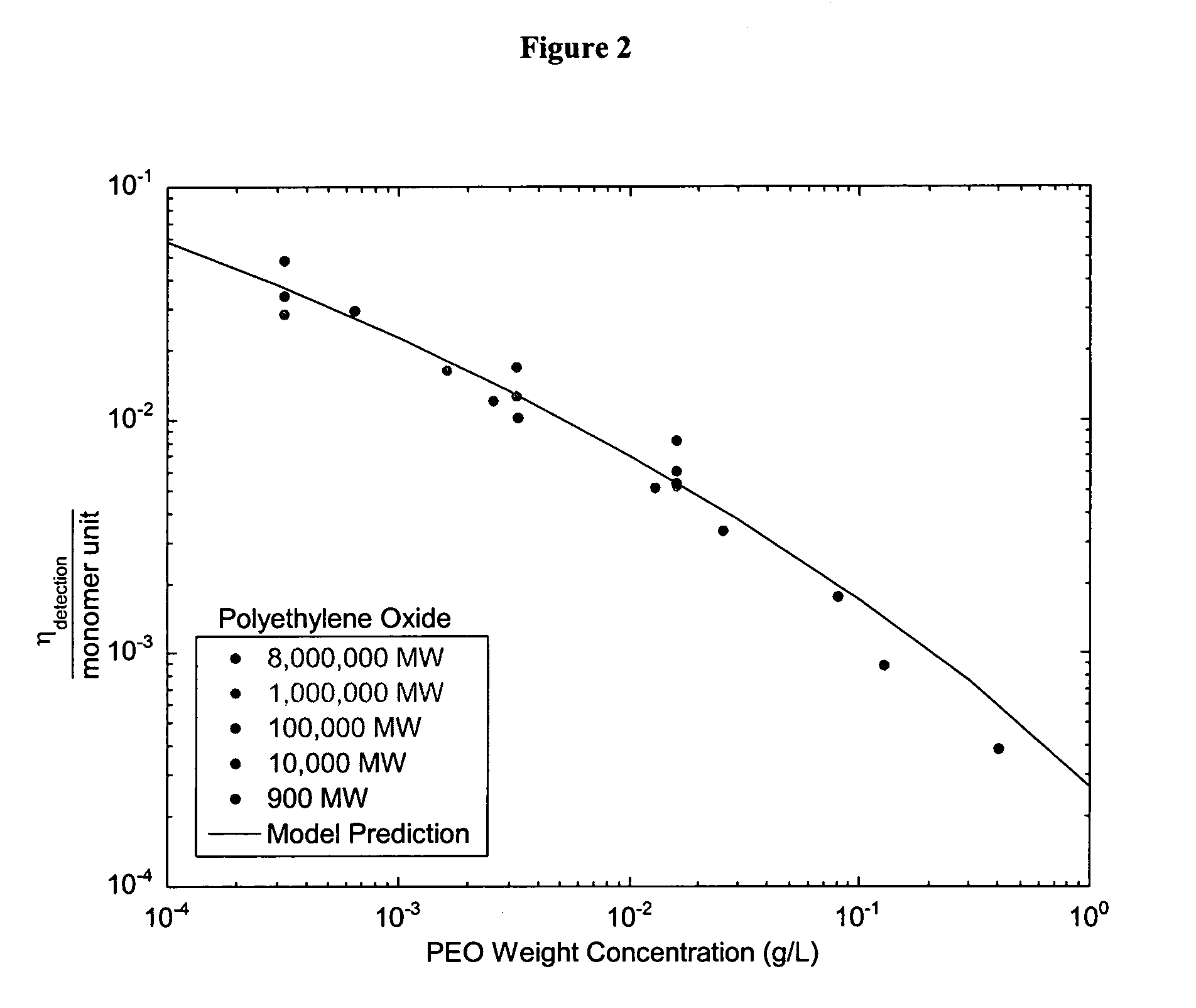Method for increasing ionization efficiency in mass spectroscopy
a mass spectroscopy and efficiency technology, applied in the field of mass spectroscopy efficiency improvement, can solve the problems of limiting the intrinsic sensitivity of the intrinsic sensitivity of the intrinsic sensitivity of the intrinsic sensitivity of the intrinsic sensitivity of the intrinsic sensitivity of the intrinsic sensitivity of the intrinsic sensitivity of the intrinsic sensitivity of the intrinsic sensitivity of the intrinsic sensitivity of the intrinsic sensitivity of the intrinsic sensitivity of the intrinsic sensitivity of the intrinsic sensitivity, and achieve the effect of increasing the un
- Summary
- Abstract
- Description
- Claims
- Application Information
AI Technical Summary
Benefits of technology
Problems solved by technology
Method used
Image
Examples
Embodiment Construction
[0029]Mass spectrometry (MS) fundamentally consists of three components: ion sources, mass analyzers, and ion detectors. The three components are interrelated; some ion sources may be better suited to a particular type of mass analyzer or analyte. Certain ion detectors are better suited to specific mass analyzers. The focus of this invention is the ion source and, more specifically, the ionization process. ESI and MALDI ion sources are widely used for organic molecules, and are generally preferred for the ionization of non-volatile organic species. ESI is widely practiced because it can be readily coupled with liquid chromatography and capillary electrophoresis for added discrimination capability. MALDI techniques are widely practiced on large molecules (e.g., proteins) that can be difficult to solubilize and volatize in ESI. The principle advantage of MALDI is the small number of charge states that arise from molecules with a multiplicity of ionizable groups. The principle disadvan...
PUM
| Property | Measurement | Unit |
|---|---|---|
| energy | aaaaa | aaaaa |
| flow rate | aaaaa | aaaaa |
| total ion current | aaaaa | aaaaa |
Abstract
Description
Claims
Application Information
 Login to View More
Login to View More - R&D
- Intellectual Property
- Life Sciences
- Materials
- Tech Scout
- Unparalleled Data Quality
- Higher Quality Content
- 60% Fewer Hallucinations
Browse by: Latest US Patents, China's latest patents, Technical Efficacy Thesaurus, Application Domain, Technology Topic, Popular Technical Reports.
© 2025 PatSnap. All rights reserved.Legal|Privacy policy|Modern Slavery Act Transparency Statement|Sitemap|About US| Contact US: help@patsnap.com



